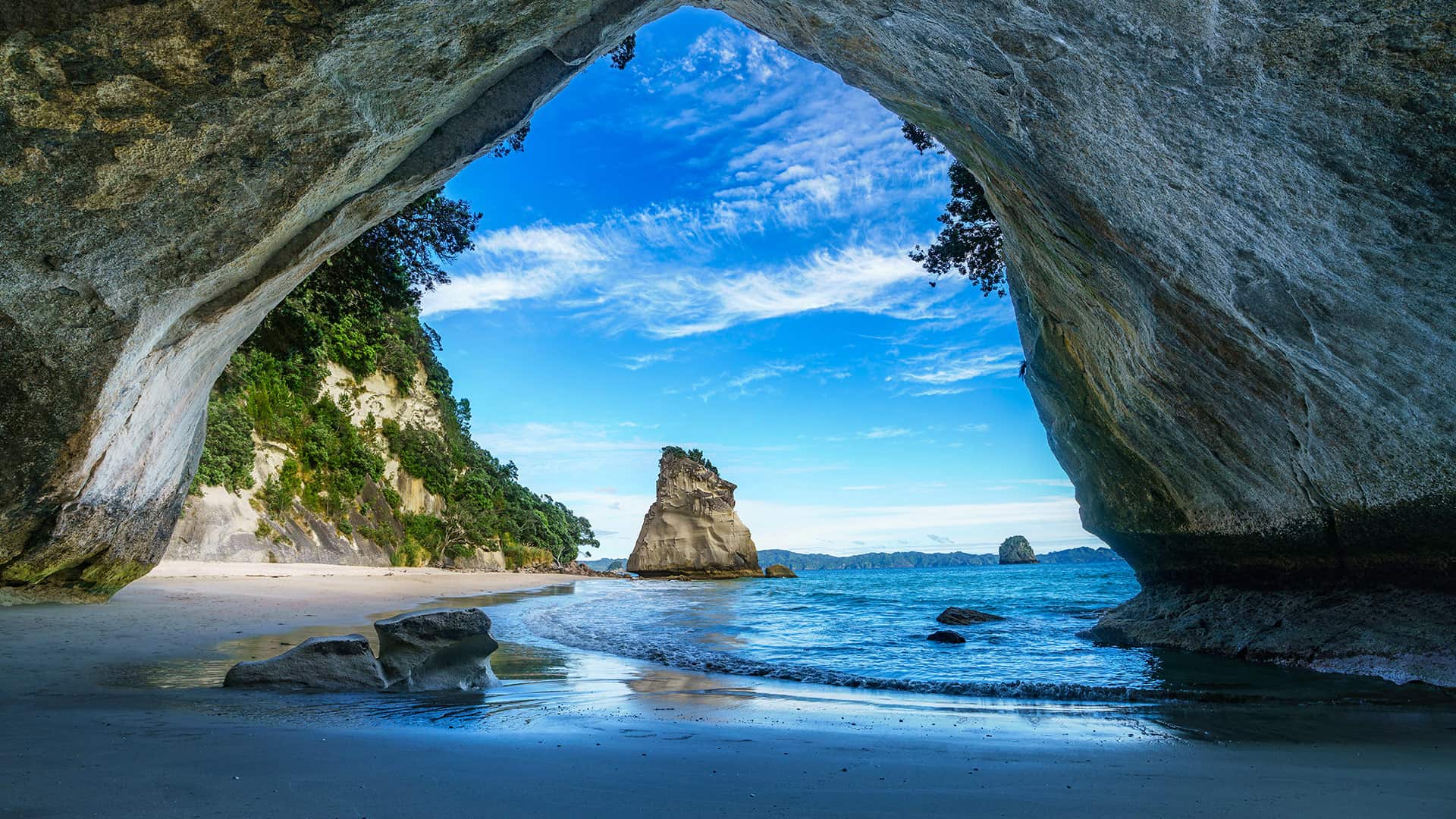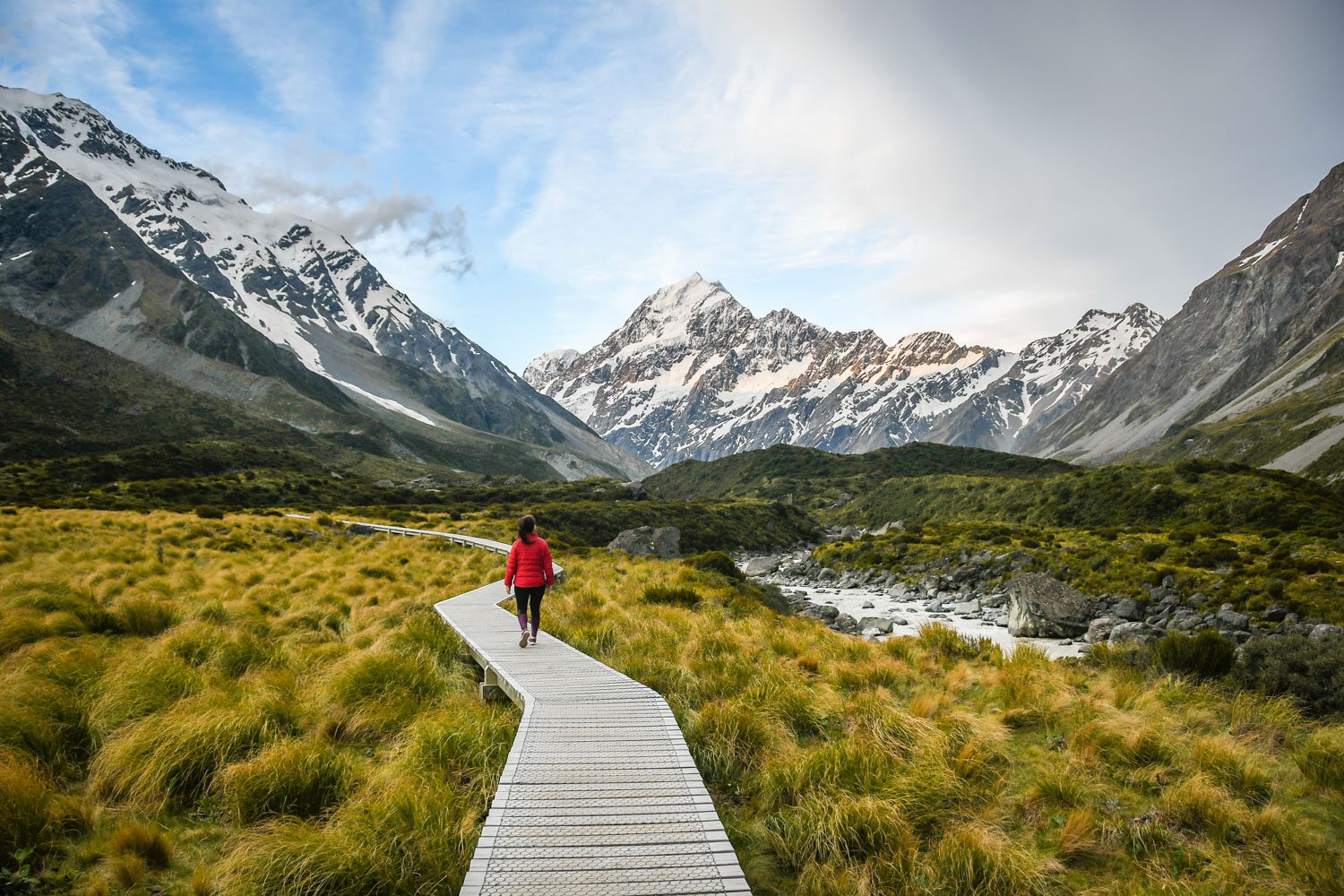
Nestled in the southwestern Pacific Ocean, New Zealand, or Aotearoa as it is known in the Māori language, is a land of staggering beauty and untamed wilderness. It’s a place where jagged mountains pierce the clouds, ancient glaciers carve through temperate rainforests, and geothermal wonders bubble up from the earth’s core. From the subtropical beaches of the north to the dramatic fjords of the south, New Zealand offers an adventure for every kind of traveler.
This comprehensive guide will walk you through everything you need to plan the trip of a lifetime, from must-see attractions and cultural history to practical tips on getting around and finding the perfect place to stay.
A Glimpse into Aotearoa’s Past: A Brief History

Related Articles about Land of the Long White Cloud: An Epic Guide to New Zealand:
- The Enchanting Emerald Isle of Europe: A Comprehensive Travel Guide to the Czech Republic
- The Rainbow Nation Beckons: Your Ultimate Travel Guide to South Africa
- Kuala Lumpur: A Tapestry of Tradition and Tomorrow
- India: A Traveler’s Guide to a Land of Infinite Wonders
- Lombok: A Traveler’s Guide to Paradise Found
To truly appreciate New Zealand, one must understand its rich and complex history. Long before European ships sighted its shores, Aotearoa was settled by Polynesian navigators who journeyed across the vast Pacific in waka (canoes) around 1300 AD. These people became the Māori, developing a deep spiritual connection to the land (whenua) and a vibrant culture rich in art, mythology, and tradition.
In 1840, a pivotal moment in the nation’s history occurred with the signing of the Treaty of Waitangi between representatives of the British Crown and numerous Māori chiefs. Intended to establish a partnership and govern the new colony, the treaty’s differing interpretations in English and Māori have led to centuries of conflict and debate over land rights and sovereignty. Today, the treaty is considered New Zealand’s founding document, and the bicultural relationship between Māori (tangata whenua, the people of the land) and Pākehā (New Zealanders of European descent) continues to shape the nation’s identity, politics, and culture.
The Best Time to Visit: A Season for Every Traveler
New Zealand’s temperate climate means it’s a year-round destination, but each season offers a distinct experience.
- Summer (December – February): This is peak season. The weather is warm and sunny, perfect for swimming, hiking, and exploring the coastline. Expect bustling towns, higher prices, and the need to book accommodation and activities well in advance. The long daylight hours are a major plus for sightseeing.
- Autumn (March – May): Often considered the best time to visit. The weather is still mild, the summer crowds have thinned, and the landscape, particularly in the South Island’s Central Otago region, erupts in a stunning display of gold and red foliage. It’s an ideal time for hiking the Great Walks.
- Winter (June – August): Winter transforms the South Island into a snowy wonderland, making it a world-class destination for skiing and snowboarding, especially around Queenstown and Wanaka. The North Island remains milder, and it’s a great time to visit geothermal attractions like Rotorua, where the steam is even more dramatic in the crisp air.
- Spring (September – November): A season of renewal, spring brings blooming wildflowers, cascading waterfalls fed by melting snow, and adorable newborn lambs frolicking in the fields. The weather can be unpredictable—be prepared for "four seasons in one day"—but the landscapes are lush, green, and vibrant.

Top Attractions: An Island-by-Island Adventure
New Zealand is composed of two main landmasses, the North Island and the South Island, each with its own unique character and attractions.
The North Island: Land of Fire and Culture
The North Island is known for its volcanic activity, beautiful beaches, and as the heartland of Māori culture.
- Rotorua: This is New Zealand’s geothermal capital. Prepare for the distinct smell of sulphur as you witness bubbling mud pools, erupting geysers like Pōhutu at Te Puia, and vibrant mineral terraces. Rotorua is also the best place to immerse yourself in Māori culture, with opportunities to visit a living Māori village, witness a powerful haka performance, and feast on a traditional hāngi (food cooked in an earth oven).
- Tongariro National Park: A UNESCO Dual World Heritage site, this park is home to three active volcanoes: Tongariro, Ngauruhoe (famous as Mount Doom in The Lord of the Rings), and Ruapehu. The Tongariro Alpine Crossing is often cited as one of the world’s best one-day hikes, taking you across a dramatic volcanic landscape of emerald lakes and steaming vents.
- Bay of Islands: A subtropical paradise in the "winterless north," this region consists of 144 islands, secluded bays, and pristine beaches. It’s a haven for sailing, fishing, and dolphin watching. Don’t miss a visit to the Waitangi Treaty Grounds, where the nation’s founding document was signed.
- Auckland: New Zealand’s largest city is a vibrant, multicultural hub built around two large harbours. Ascend the Sky Tower for panoramic views, take a ferry to Waiheke Island for world-class wine tasting, or explore the trendy restaurants and bars of the Viaduct Harbour.
- Wellington: The nation’s capital is a compact, cool, and creative city nestled between a sparkling harbour and rolling green hills. Explore the interactive national museum, Te Papa Tongarewa, get a behind-the-scenes look at movie magic at the Wētā Workshop, and indulge in its legendary café and craft beer scene.
The South Island: Land of Epic Landscapes
The South Island is a playground of raw, natural beauty, with towering mountains, deep fjords, and vast glaciers.
- Fiordland National Park (Milford Sound & Doubtful Sound): The crown jewel of New Zealand’s tourism. Rudyard Kipling called Milford Sound the "eighth wonder of the world," and it’s easy to see why. Sheer cliffs rise dramatically from dark waters, waterfalls cascade from dizzying heights, and seals and dolphins play in the wake of tour boats. A cruise or kayak trip here is an unforgettable experience. For a more remote and serene adventure, consider an overnight cruise on the larger, quieter Doubtful Sound.
- Queenstown: The undisputed "Adventure Capital of the World." Set on the shores of Lake Wakatipu and surrounded by the majestic Remarkables mountain range, Queenstown is a hub for adrenaline junkies. It’s the birthplace of commercial bungy jumping, but you can also go jet boating, skydiving, white-water rafting, or skiing in the winter. For a more relaxed pace, enjoy the scenic gondola ride or explore nearby historic Arrowtown.
- Aoraki / Mount Cook National Park: Home to New Zealand’s highest peak, this park is a mountaineer’s dream. For casual visitors, the Hooker Valley Track offers an accessible and incredibly rewarding walk with breathtaking views of Aoraki/Mount Cook and its surrounding glaciers and icebergs. The park is also part of an International Dark Sky Reserve, making it one of the best places on Earth for stargazing.
- Abel Tasman National Park: Famed for its golden-sand beaches, turquoise waters, and lush coastal forest, Abel Tasman is best explored by foot or by water. Kayak from one idyllic cove to another, spotting seals along the way, or hike a section of the Abel Tasman Coast Track, one of New Zealand’s Great Walks.
- Franz Josef & Fox Glaciers: These are two of the most accessible glaciers in the world, unique for their descent from the high Southern Alps into temperate rainforest. While the terminal faces have receded significantly, a guided heli-hike allows you to land on the ice and explore its incredible blue caves, crevasses, and pinnacles.
Getting Around: Navigating New Zealand
The best way to experience New Zealand is on the road, with the freedom to stop at every stunning viewpoint.
- Rental Car or Campervan: This is the most popular and flexible option. Renting a campervan is a quintessential Kiwi experience, combining your transport and accommodation in one. Remember that New Zealanders drive on the left, and many roads, while scenic, are narrow and winding. Allow more time than GPS estimates suggest.
- Domestic Flights: For covering the long distance between major hubs like Auckland and Queenstown, flying is the most efficient option. Air New Zealand is the primary domestic carrier.
- Buses: A reliable and budget-friendly network of buses, primarily operated by InterCity, connects most towns and cities. While less flexible than a car, it’s a great option for solo travelers or those on a tight budget.
- Scenic Trains: New Zealand’s train network is limited but spectacular. The TranzAlpine journey from Christchurch to Greymouth is considered one of the world’s greatest train journeys, crossing the magnificent Southern Alps.
Where to Stay: Accommodation for Every Budget
New Zealand offers a wide range of accommodation to suit any travel style.
- Holiday Parks & Campgrounds: A staple of Kiwi travel, these are perfect for campervans and tenting. They offer powered sites, communal kitchens and bathrooms, and often cabins for those without their own gear.
- Motels: Ubiquitous and practical, motels are a great choice for road-trippers. They are typically clean, comfortable, and most rooms include a small kitchenette.
- Hotels: Found in all cities and larger towns, ranging from basic chains to boutique luxury properties.
- Backpacker Hostels: Ideal for budget-conscious and solo travelers, hostels offer dorm beds and private rooms, providing a great social atmosphere to meet other adventurers.
- Luxury Lodges: For a truly special experience, New Zealand is home to some of the world’s most exclusive and stunning luxury lodges, often set in remote and breathtaking locations.
Essential Travel Tips for a Smooth Journey
- Pack for Four Seasons: New Zealand’s weather is notoriously changeable. The key is to pack layers. A waterproof jacket, fleece, and sturdy walking shoes are essential, no matter the season.
- Biosecurity is Serious: New Zealand has a fragile ecosystem. Be prepared for strict biosecurity checks at the airport. You must declare all food, plant material, and outdoor equipment (like hiking boots) to avoid heavy fines.
- Book in Advance: During the peak summer season, it is crucial to book accommodation, rental vehicles, and popular activities (like the Great Walks or Milford Sound cruises) months in advance.
- Sun Protection is a Must: Due to a thinner ozone layer, the sun in New Zealand is incredibly harsh. Wear sunscreen, a hat, and sunglasses every day, even when it’s cloudy.
- Embrace Manaakitanga: This Māori concept of hospitality, kindness, and respect is deeply ingrained in Kiwi culture. Be open, friendly, and don’t be afraid to ask a local for tips. A friendly "Kia Ora" (hello) will always be well-received.
New Zealand is more than just a destination; it’s an experience that awakens the senses and invigorates the soul. It’s the thrill of adventure, the warmth of its people, and the profound, humbling beauty of its landscapes. Whether you’re seeking adrenaline-pumping action or quiet moments of reflection in nature, Aotearoa awaits with open arms and a lifetime of memories.





